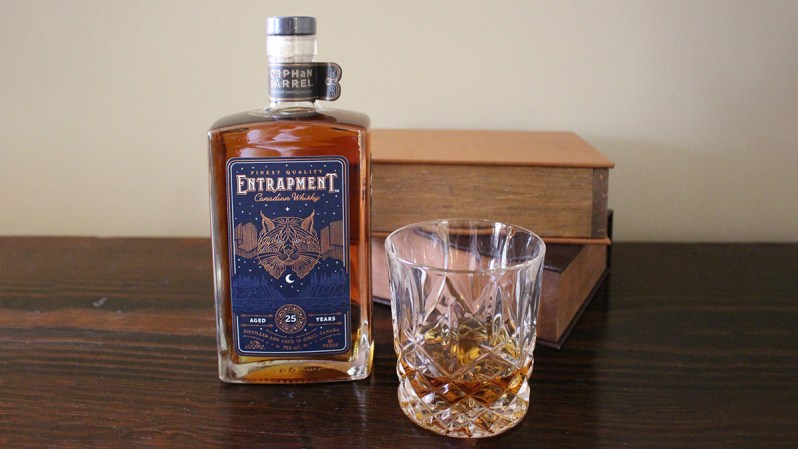
For many, collecting whisk(e)y is the grown-up version of collecting baseball cards or stamps. Ample care and time are taken to curate one’s collection — from traveling many miles and waiting in line for hours for special releases to buying and selling on the secondary market, whisk(e)y nerds do everything that baseball card aficionados do. Whisk(e)y collectors, though, have one advantage: If they decide to open their whiskies, they have the opportunity to get a little buzz or more. (No matter how hard you try, that Derek Jeter rookie card isn’t going to get you drunk.)
There are some collectors, though, that choose not to drink the whiskies they collect, opting instead to build out fantastic bars in their man caves to show off their hard-earned wares.
Is one path better than the other? Are there ways to preserve your whiskey that are dependent on the path you choose? To find out the truth, we sat down with Diageo Reserve’s national program director Ewan Morgan (a third-generation whisky man, himself) to find out about the different methods collecting whisk(e)y and how best to preserve it once you’ve got it.
So, the age-old question: to open or not to open. This, as you might expect, is a personal choice (to an extent). You can open your whiskies or you can leave them sealed up tight. It all depends on you, Morgan says.
Overall, one of the biggest things you need to know — whether you open the whiskey or not — is that where you store your whiskies matter.
“Sunlight can affect the taste of the liquid over time. It’s important to also keep your whiskey in a place where the temperature doesn’t fluctuate too drastically,” Morgan says. “So if you’ve got your bottle on display near a window that receives direct sunlight, you’d be advised to move it if you ever plan on drinking it.”
Where you store your whiskies matters most.
An illustration of this, he adds, is the custom crate that holds the Orphan Barrel Archive Collection. The wooden box comes with a panel that can be opened and folded back, revealing the six Orphan Barrel releases contained in the collection.
(The Orphan Barrel series, for those that haven’t heard of it, is a series of ultra-rare whiskies that brings to light lost and forgotten barrels. The newest release, Entrapment, is the first Canadian whisky in the series.)
If you’re of the camp that doesn’t open the bottles (and you’ve got a good place to store them), he says, you should be good to go on keeping the whiskey as long as you want.
“Collected whiskey will last as long as you keep it. Whiskey doesn’t expire or age once it is placed in the bottle. As long as you can keep the air out of the bottle and in a dark place, the whiskey can last you a lifetime,” Morgan says.
For those that open their whiskies — an option that is encouraged in certain cases, such as the Archive Collection, among many others — the question of whether or not it ever goes bad might come to mind from time to time.
You could be cleaning out a closet one day and come upon a dusty bottle that you completely forgot about (Picture it: It’s 2035 and you come across a bottle of this whisky, which you for some reason forgot about). Should you drink it? Would it still be good? On this, Morgan says that the shelf life of an open bottle depends on how much has already been consumed.
“The more liquid that is left in the bottle, the less air may enter to tamper with the quality. If stored properly, a bottle of more than halfway full whiskeys should last about a year opened. Under halfway empty, the life of your whiskey deteriorates faster. We have to protect these special liquids to ensure their quality remains intact until the last drop,” he says.
If you have a bottle that less than full, Morgan says, some of the ways you can prolong the life of the whiskey (and ones that professional collectors use) are by using glass beads or decanting the liquid into smaller glass bottles.
So whether you decide to open your special whiskies or not, ultimately, comes down to you. Do you want to save them, perhaps as an inheritance for a child or someone else, or do you want to open the special bottles you’ve got and create priceless memories from sharing your whiskies with others? We can’t answer that for you, but if you do decide to pick up Entrapment or any of the other Orphan Barrel bottles, please let us know —we’d be happy to sit around and drink it with you.





